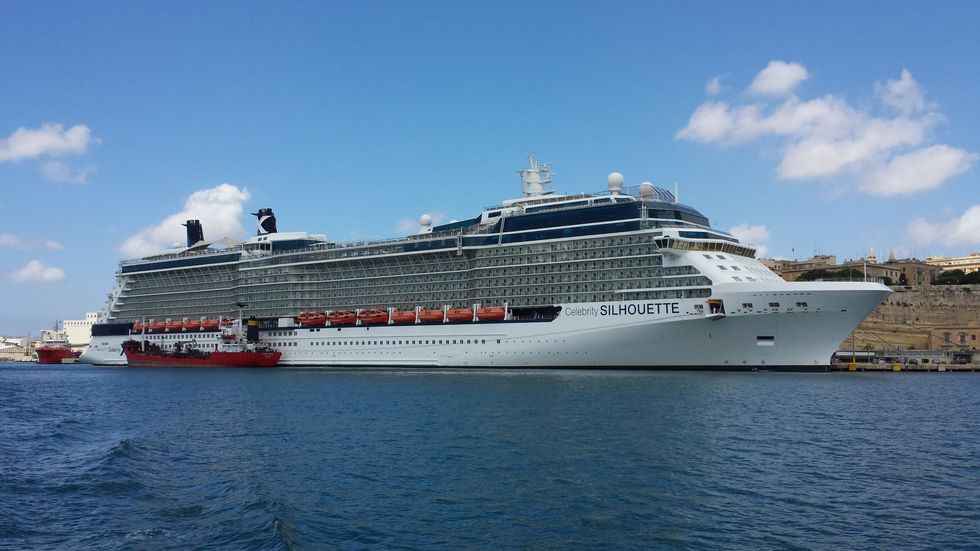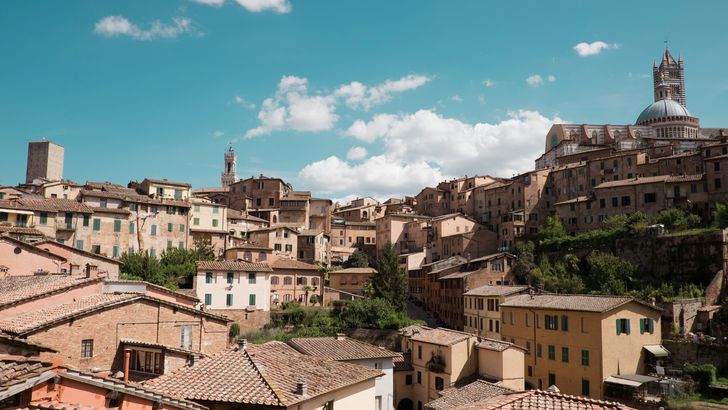Since 1979, many Americans have seen Iran as a backward state that is dedicated to the eradication of the United States and the West. The word "democracy" is not often associated with the country, but the Islamic Republic of Iran does indeed have certain democratic elements.
Iran is the second entry in the series on democracy around the world. If you missed the first entry, you can follow this link to delve into the history of democracy in Russia. Each week, another article will be published concerning the state of democracy in a specific country. Stay tuned to examine the other country cases in this series. Next week will be a continued exploration of Iran's democracy.
Iran shares many characteristics with its other Muslim nations in the Middle East but has some very important distinctions. In the early 1500s, Iran was under the control of the Safavid Empire and Shah Ismail I began the conversion process of the population to Shi'a Islam from Sunni Islam. Islam had been the dominant religion in Iran since the Muslim conquest of Persia in the mid 600s. Almost immediately following the death of the Prophet Muhammad in 632, the first caliph of the Rashidun Caliphate, Abu Bakr, launched an invasion of both the Byzantine and Sassanian empires. Within only a few decades, Persia had fallen to the Arab invaders and Zoroastrianism had ceded dominance to Islam. But Islam had split following the Prophet Muhammad's death between Sunnis, who believe the Prophet's successor should be a worthy individual who would follow his guidelines, and the Shi'a, who believe the successor should come from the Prophet's own bloodline, sparking conflict and assassinations between the two main sects. Sunnis are the vast majority in Islam, with about 90% of the religion adhering to Sunni doctrine, while the Shi'a constitute around 10%, and other minority sects make up the difference.
A common misconception about the Middle East is that all of its inhabitants are Arab, when in actuality, the Middle East hosts a wide array of distinct ethnic groups different from the Arabs, and Iran is home to one such group. The dominant ethnic group in Iran is Persian, now also known as Iranian. Combined with the religious differences, Iran's ethnic distinction from the other Middle Eastern states helps to build the basis of Iranian nationalism.
Persia was one of the key players in what is now seen as the first major struggle between East and West in history during the Greco-Persian Wars. Greek city-states, including Athens and Sparta, clashed with the expanding Achaemenian (Persian) Empire, and the Greek victory in the wars marked a massive event in history. The Greek city-states, especially Athens, had been experimenting with democracy and their victory over the Achaemenians, who followed a monarchy, ensured the survival of the very idea of democracy. This idea would eventually permeate throughout the world, even reaching into the modern day heart of the ancient Achaemenian Empire.
Much like China, Iran has experienced the waxing and waning of multiple ruling dynasties. The Safavids laid their claim to fame by converting the population to Shi'ism, with Shah Abbas I going as far as to force his subjects to accept Twelver Shi'ism. This is where the Safavids based their legitimacy to rule in. In Twelver Shi'ism, the Twelfth Imam, Muhammad al-Mahdi, disappeared in what is known as the Occultation, and will return as the savior of the world with Isa Ibn Maryam (Jesus, Son of Mary), or al-Masih (the Messiah), to bring peace and justice to mankind. It was believed that the caliphs were the righteous leaders of the people until the return of al-Mahdi. When the Safavids were toppled by invading Afghan tribesmen, the Qajar people rose up and took control of Iran in 1794, establishing themselves as the next dynasty. But because the Qajars were not ethnically Iranian like the Safavids, they could not reasonably link their legitimacy to rule to Twelver Shi'ism. This marked a significant turning point in the history of the Iranian government, as now the clerics were able to assert themselves as the supreme authorities and interpreters of Islam and sharia (Islamic law).
Bakhtiari revolutionaries during the Constitutional Revolution of 1906
Democracy reached new heights in Iran in 1906, when the Constitutional Revolution took place during the Qajar dynasty. Business leaders and bankers began to demonstrate against government moves around European customs, but soon many Iranian civilians joined in and the protests threatened the stability of Qajar rule. In the same year, the protesters were able to get the creation of an elected legislative assembly, known as the Majles, and the Shah was forced to sign a constitution that limited the power of the royalty. Instability followed the revolution, with the monarchy battling the Majles over the balance of power, which was only exacerbated by the actions of armed resistance groups. Mohammad Ali Shah was deposed by the Majles in 1909 after the capital had fallen into the control of the freedom fighters and the shah fled to the Russian embassy. Mohammad Ali's 13-year-old son, Ahmad Mirza, was then named as the new shah while his father went into exile in Russia.
During the outbreak of World War I in Europe, the Third Majles met and declared neutrality, although this declaration was ignored and Russia, Britain, and the Ottoman Empire invaded Persia. The Russians and British ended up fighting against the Ottomans in Iranian territory, and the British used their occupied territories to launch attacks against Russian troops. Iran had become a battleground between competing European empires and another theater in the First World War. By 1921, the Qajar regime was in almost complete disarray, leaving itself vulnerable to collapse.
Reza Shah Pahlavi (1925-1941)
On February 18, 1921, the defense minister, Reza Khan, marched his Persian Cossack Brigade into the center of Tehran and overthrew the ruling government. While he allowed Ahmad to remain as shah until 1925, the British installed Reza Khan as shah in that year, marking the beginning of the Pahlavi dynasty. The word "Pahlavi" hearkens back to an ancient language spoken by the Sassanian dynasty. Now known as Reza Shah Pahlavi, he required that the country be referred to strictly as Iran, not Persia, which was a term mainly used by Western diplomats to refer to the country which was called "Iran" in the Persian language. Reza Shah changed the name because Persia referred only to a single ethnic group in the country while Iran referred to the country as a whole. While the British still controlled all of Iran's oil resources through the Anglo-Iranian Oil Company, Reza Shah attempted to bypass British and Russian (now the USSR) influence by working with Germany, Italy, France, and other European countries.
Reza Shah's dealings with Germany became an issue in 1939 when Germany went to war with Britain and World War II began. When German troops invaded the Soviet Union in 1941, the British and Russians found themselves as allies once again, and despite Reza Shah's declaration of neutrality, the Soviets and British believed he was sympathetic to Germany and the Axis Powers. Because of fears that the strategically important “Persian Corridor” would be threatened, cutting off Soviet access to U.S. equipment from the Lend-Lease program, Great Britain and the Soviet Union launched a surprise invasion of Iran, quickly overrunning the country. While the Iranian army had begun to modernize, the main focus of the armed forces was internal security, as the increasingly militant Tudeh communist party had begun to take control of some northern provinces. This foreign intervention removed Reza Shah from power on September 16, 1941, and he died in exile in South Africa in 1944.
Prime Minister Mohammad Mossadeq (1951-1953)
Prime Minister Mohammad Mossadeq (1951-1953)
Following the invasion, the British instated Reza Shah's son, Mohammad Reza Shah Pahlavi, as the next ruler of Iran in September 1941. Mohammad Reza saw himself as the person meant to carry out his father's reform moves, but he soon faced competition from the democratically elected Mohammad Mossadeq. Mossadeq served as prime minister of Iran from 1951 to 1953 when his government was toppled by the U.S. Central Intelligence Agency and the British Secret Intelligence Service. The CIA and other Western spy agencies were embroiled in the Cold War with the Soviet Union by the 1950s, and Mossadeq's reforms had annoyed the British, who lost control of Iran's oil rights, and worried the Americans, who saw many of the moves as having Marxist leanings. To make the situation worse, the Tudeh Party, which had the backing of the Soviet Union and attempted to assassinate the shah only four years prior, had begun to infiltrate the military. By 1953, Mossadeq was essentially forced to enter into an alliance of convenience with the Tudeh Party, which became the government's foot soldiers. While Mossadeq had enjoyed popular support from the Iranians, a British embargo and the political instability had eroded his base. In response, a referendum was posed to the Iranian population that dissolved the Majlis and stripped the royalty of its power, a move that was seen as Mossadeq consolidating power. Before Mossadeq's decree, the shah was reluctant to go along with the CIA coup plans, but he finally gave his support when the Americans and British threatened to remove him from power as well. Operation Ajax began once the shah had left Iran and was safely positioned in Italy. The first coup attempt had failed, and General Fazlollah Zahedi, though instated as prime minister by royal decree, was forced to move between safe houses in order to avoid being arrested by Mossadeq's troops. Infiltrators posing as the Tudeh Party members began to "organize a communist revolution," which prompted a public outcry against the party, and Zahedi ordered the military to move against the party while citizens fought them in the streets. The shah was convinced to return to Iran by U.S. General Norman Schwarzkopf, Sr., after it was clear that Mossadeq had been removed and the government was now under the control of anti-Soviet politicians and military leaders.
Mohammad Reza Shah Pahlavi, Shahanshah of Iran (1941-1979)
With Mossadeq's attempts at limiting royal power thwarted, Mohammad Reza Shah returned to Iran to a cheering crowd, and he later mentioned that he felt for the first time that he had the approval of the Iranian people, despite being in power for more than a decade. In 1963, the shah had become a valuable ally to the West, and set about reforming Iran with the White Revolution, which encouraged land reform and development, expanded voting rights to women, and reversed many of Mossadeq's socialist-leaning policies. The shah's rule did not come without a price, though, and democracy did suffer as a result of the shah's actions following the 1953 coup. Mossadeq's National Front party was banned and its leaders were arrested, while the Tudeh Party was outlawed and bore the brunt of government crackdowns, despite being framed by the West during the coup.
The White Revolution was not without its critics, and a then-relatively obscure cleric named Ruhollah Khomeini, who was a professor at the Fayẕiyyeh Madrasa in the holy city of Qom, spoke out harshly against the reforms. One of the main arguments against them was the belief that the advancements for women's rights went against proper Islamic teachings. The reforms also moved Iran toward a secularized judicial and educational system, further eroding the power of the clerics. Khomeini also criticized the U.S.' involvement in Iran, voicing a popular opinion in the country following the blatant American involvement in the 1953 coup. In response, the government raided and sacked Fayẕiyyeh, killing several students, and detained Khomeini in June. About 400 people were killed in riots against Khomeini's detention, and he was released from house arrest in August 1963. He was arrested once again in November 1964 following his vocal opposition to a law that would allow American military personnel in Iran to be tried in U.S. military tribunals, not in Iranian courts. Prime Minister Hassan Ali Mansur met with Khomeini upon his release in an attempt to have the ayatollah drop his opposition stance against the government. Mansur slapped Khomeini across the face during the meeting, and two weeks later, the prime minister was assassinated in front of the Majles building by a 17-year-old gunman from Fada'iyan-e Islam (Devotees of Islam), a group that would later support Khomeini's rise to power in 1979.
Ayatollah Ruhollah Khomeini was sent into exile during his 1964 arrest. First living in Turkey, Khomeini spent the majority of this exile in Najaf, Iraq, only spending the final four months in Paris, France. During his exile, Khomeini perfected his idea of jurist's guardianship, which would become a vital component of the post-1979 government. The concept of jurist's guardianship states that the faqih, or Islamic jurist, has the responsibility to preside over the people of the country.
In the later years of the Pahlavi dynasty, the shah had transformed the country into what is known as a rentier state. The Iranian government had rented out its oil fields to many foreign oil companies, and because of the oil boom in 1973, the government was getting so much revenue from oil sales it didn't need to rely on taxes anymore. This posed a problem because taxes keep the government reliant on the people, but now that oil money had gotten rid of the need for taxes, the government wasn't as accountable to the people. By the mid-1970s, widespread discontent against the shah's increasingly repressive regime and corruption in the government had reached an all-time high, leaving the country exposed to instability.
Protests began in Iran because of anger against the government. Secular opponents to the shah's actions initially led the protests, but they became increasingly religious, especially after the death of Mostafa Khomeini, the son of the exiled Islamic leader. The shah's secret police, the SAVAK, concluded that Mostafa's death was from a heart attack, but many in the public believed SAVAK was behind the death. Religious students in Qom, the religious center of Iran, were insulted by a newspaper article denouncing Ayatollah Khomeini as a "British agent" and clashed with police officers. On February 18, massive protests broke out across the country, and the city of Tabriz descended into a complete riot. In May, more riots erupted, and government army special forces opened fire on another ayatollah's house, killing one of his students. As a result, Ayatollah Mohammad Kazem Shariatmadari denounced the shah's regime and called for a constitutional government. Amidst all the chaos, Mohammad Reza Shah was indecisive on how the government should respond, and because the Iranian police had no riot control training or equipment since 1963, the military was often deployed. Despite official orders forbidding the army from shooting, several inexperienced troops overreacted and opened fire on the demonstrations. On September 4, 1978, 64 people were gunned down by the military in an incident known as Black Friday, and on November 6, the shah removed the democratically elected government, replacing it with a military government.
Ayatollah Ruhollah Khomeini (with pilot) returns to Iran after years in exile
Mohammad Reza Shah Pahlavi left Iran on January 16, 1979, for "vacation," but never returned to his country, ensuring the failure of the Pahlavi dynasty. A committee was set up to return Ayatollah Khomeini to the country, and February 1, Khomeini flew from Paris to Iran. Although a provisional government was already set up, the ayatollah condemned them and insisted that he should appoint the government. This move set the precedent of the modern structure of the new Islamic Republic of Iran. The shah later died in exile in Egypt of cancer in 1980. The revolution is a perfect example of a "revolution of rising expectations," as the Iranian people were much better off than they had been, but some setbacks occurred, causing frustration.
Khomeini became the supreme leader of the Islamic Republic of Iran and the government structure was reorganized. The current government is headed by the supreme leader, but there is a democratically elected president, legislature, and several other overlapping bodies. The Majles survived the 1979 revolution, and opposition parties are tolerated within moderation. Khomeini died in 1989 and was replaced by Ayatollah Ali Khamenei, who still serves as the supreme leader.
Following the 1979 Islamic Revolution, Iran was transformed from a secular monarchy to a theocratic system. The Islamic Republic is often seen as being a dictatorship, but many of the republic's bodies are directly elected. Next week we'll look at the structures in Iran that encourage democracy, those that may inhibit democracy, and pose some predictions about the future of Iran.












 Photo by
Photo by  Photo by
Photo by  Photo by
Photo by  Photo by
Photo by  Photo by
Photo by  Photo by
Photo by  Photo by
Photo by 


 File:Hampton Beach, New Hampshire - low tide - panoramio.jpg ...
File:Hampton Beach, New Hampshire - low tide - panoramio.jpg ... fire on fire pit during night time
Photo by
fire on fire pit during night time
Photo by  Free Images : american lobster, dish, new england clam bake ...
Free Images : american lobster, dish, new england clam bake ... vanilla flavor ice cream with chocolate syrup
Photo by
vanilla flavor ice cream with chocolate syrup
Photo by  File:Celebrity Silhouette (ship, 2011) 002.jpg - Wikimedia Commons
File:Celebrity Silhouette (ship, 2011) 002.jpg - Wikimedia Commons








